Note: I don't give a single thing if its length is incorrect :/
Controls:
Ag1 - Arm Speed brakes (requires gear down)
Ag2-4 - Strobe/Landing/Cabin Lights
Ag5 - Open front left door (Requires not moving)
AG6 - Pushback
AG8 - Engines, Nav/Taxi/Beacon lights
About Dc-9:
The McDonnell Douglas DC-9 is an American five-abreast, single-aisle aircraft designed by the Douglas Aircraft Company. It was initially produced as the Douglas DC-9 prior to August 1967, after which point the company had merged with McDonnell Aircraft to become McDonnell Douglas. Following the introduction of its first jetliner, the high capacity DC-8, in 1959, Douglas was interested in producing an aircraft suited to smaller routes. As early as 1958, design studies were conducted; approval for the DC-9, a smaller all-new jetliner, came on April 8, 1963. The DC-9-10 first flew on February 25, 1965, and gained its type certificate on November 23, to enter service with Delta Air Lines on December 8.

The DC-9 is powered by two rear-mounted Pratt & Whitney JT8D low-bypass turbofan engines under a T-tail for a cleaner wing aerodynamic. It has a two-person flight deck and built-in airstairs to better suit smaller airports. The Series 10 aircraft are 104 ft (32 m) long for typically 90 coach seats. The Series 30, stretched by 15 ft (4.5 m) to seat 115 in economy, has a larger wing and more powerful engines for a higher maximum takeoff weight (MTOW); it first flew in August 1966 and entered service in February 1967. The Series 20 has the Series 10 fuselage, more powerful engines, and the Series 30's improved wings; it first flew in September 1968 and entered service in January 1969. The Series 40 was further lengthened by 6 ft (2 m) for 125 passengers, and the final DC-9-50 series first flew in 1974, stretched again by 8 ft (2.5 m) for 135 passengers. When deliveries ended in October 1982, 976 had been built. Smaller variants competed with the BAC One-Eleven, Fokker F28, and Sud Aviation Caravelle, and larger ones with the original Boeing 737.
The original DC-9 was followed by the second generation in 1980, the MD-80 series, a lengthened DC-9-50 with a larger wing and a higher MTOW. This was further developed into the third generation, the MD-90, in the early 1990s, as the body was stretched again, fitted with V2500 high-bypass turbofans, and an updated flight deck. The shorter and final version, the MD-95, was renamed the Boeing 717 after McDonnell Douglas's merger with Boeing in 1997; it is powered by Rolls-Royce BR715 engines. The DC-9 family was produced between 1965 and 2006 with a total delivery of 2441 units: 976 DC-9s, 1191 MD-80s, 116 MD-90s, and 155 Boeing 717s. As of August 2022, 250 aircraft remain in service: 31 DC-9s (freighter), 116 MD-80s (mainly freighter), and 103 Boeing 717s (passenger), while the MD-90 was retired without freighter conversion.
About Continental Airlines:
Continental Airlines, simply known as Continental, was a major airline in the United States that operated from 1934 until 2012 when it merged with United Airlines. It had ownership interests and brand partnerships with several carriers.

Continental started out as one of the smaller carriers in the United States, known for its limited operations under the regulated era that provided very fine, almost fancy, service against the larger majors in important point-to-point markets, the largest of which was Chicago/Los Angeles. However, deregulation in 1978 changed the competitive landscape and realities, as noted by Smithsonian Airline Historian R. E. G. Davies, "Unfortunately, the policies that had been successful for more than forty years under (Robert) Six's cavalier style of management were suddenly laid bare as the cold winds of airline deregulation changed all the rules—specifically, the balance between revenues and expenditures."
In 1981, Texas International Airlines acquired a controlling interest in Continental. The companies were merged in 1982, moved to Houston, and grew into one of the country's largest carriers despite facing financial and labor issues, eventually becoming one of the more successful airlines in the United States.
Continental and United Airlines merged in an $8.5 billion all-stock merger of equals on October 1, 2010. Continental's shareholders received 1.05 per share in United stock for each Continental share they owned. Upon completion of the acquisition, UAL Corporation changed their name to United Continental Holdings. During the integration period, each airline ran a separate operation under the direction of a combined leadership team, based in Chicago. The integration was completed on March 3, 2012. Although the merged airline retained the United name, it uses Continental's operating certificate and livery. On June 27, 2019, United changed its parent company name from United Continental Holdings to United Airlines Holdings.
About Continental Airlines Flight 1713:
Continental Airlines Flight 1713 was a commercial airline flight that crashed while taking off in a snowstorm from Stapleton International Airport in Denver, Colorado, on November 15, 1987. The Douglas DC-9 airliner, operated by Continental Airlines, was making a scheduled flight to Boise, Idaho. Twenty-five passengers and three crew members died in the crash

N626TX, the aircraft involved in the accident
The National Transportation Safety Board (NTSB) investigation of the accident determined that the most probable cause of the accident was the failure on the part of the pilot in command to have the aircraft deiced a second time before takeoff.
About Background Information:
Flight 1713 was operated using a 21-year old McDonnell Douglas DC-9-14, a twin-engined, narrow-body jet airliner with the registration number N626TX.? The aircraft was equipped with two Pratt & Whitney JT8D-7B engines.? It was originally delivered to Air Canada in May 1966 and sold to Texas International Airlines in 1968, where it served the majority of its service until Texas International was acquired by Continental in 1982. In 21 years of service, it had accumulated over 52,400 flight hours and over 61,800 cycles.
Crew:
The captain was 43-year-old Frank Benjamin Zvonek Jr., who had been with Continental Airlines since 1969. He had 12,125 hours of flight experience, but only 166 hours on the DC-9, or "in type." He had been upgraded to captain less than three weeks earlier. The first officer was 26-year-old Lee Edward Bruecher, hired by Continental four months earlier; he had previously flown for Rio Airways and passed his initial proficiency check in the DC-9 in mid-September. He had 3,186 flight hours, but only 36 hours on the DC-9, which was the extent of his turbojet experience and he had not flown at all for the past 24 days.? The cabin crew consisted of three flight attendants.
Weather:
At the time of the accident on Sunday afternoon, the National Weather Service was reporting moderate wet snow at Stapleton International Airport. The heaviest snowfall rate occurred between 13:10 and 14:20 MST, with the peak snowfall rate occurring around 13:50
Accident:
Continental Airlines Flight 1713 was scheduled to depart Denver at 12:25, but many flights out of Denver that day were delayed by the inclement weather. At 13:03, Flight 1713 taxied from its gate to the deicing pad; unfortunately, air traffic controllers were not aware that Flight 1713 had departed the gate because the flight crew had done so without first requesting taxi clearance. Deicing was completed at 13:46.
At 13:51, Flight 1713 contacted the clearance delivery controller for permission to "taxi from the ice pad." The clearance delivery controller, believing that Flight 1713 was still at the gate and requesting to proceed to deicing, instructed the flight to contact Ground Control, who then cleared Flight 1713 to taxi to the deicing pad. Having already completed deicing, Flight 1713's crew seem to have interpreted this new clearance to mean they could now taxi from the pad and proceed to the runway.
At 14:05, Flight 1713 was lined up on the number-one position at the north end of Runway 35L and the crew was ready for take off. Not kept properly informed of Flight 1713’s position, the air traffic controllers tried repeatedly to have different planes take off, leaving Flight 1713 standing in the falling snow for several minutes and opening the airliner to the risk of "wing contamination" by ice. Flight 1713 then notified air traffic controllers that they were holding at the start of the runway and awaiting takeoff instructions.

Flight 1713 was cleared for takeoff at 14:14. As the DC-9 was taking off, the pilot in control over-rotated; the aircraft descended and the left wing struck the ground, causing the wing to separate. A fuel-fed flash fire ignited in the left wing shortly after it struck the ground, causing a "fireball" inside the cabin.? The left side of the fuselage and cockpit struck the ground next and the plane continued rolling until inverted. As the DC-9 skidded, the left side was tilted over and the tail was inverted; this action caused the center section of the fuselage to compress and crush many of the passengers on board.
A total of 25 passengers and three crew members died due to the crash; the final two fatalities succumbed while hospitalized. The captain, the first officer, one flight attendant and 11 of the passengers died from blunt trauma. In addition, five passengers died of head injuries secondary to blunt trauma and 9 passengers died of asphyxia.? The remaining 52 passengers and two flight attendants survived.? Of the surviving passengers, 25 received minor injuries and 27 received serious injuries.? Fitzsimons Army Medical Center sent its personnel to assist in the triage of passengers and 10 hospitals treated the survivors.
Investigation:

The seating chart of Continental Airlines Flight 1713, based on the official NTSB report:
The chart illustrates locations of passengers, lack of injuries, severities of injuries and causes of deaths, all where applicable.
The NTSB investigated the accident.
In July 1988, Continental Airlines filed a report with the NTSB positing the causes of the crash as wake turbulence, poor snow plowing on the runway and errors by air traffic controllers. However, the NTSB investigated the wake-turbulence theory and concluded that wake turbulence from the preceding flight would not have affected Flight 1713.
During the investigation, the crew's low levels of experience on the DC-9 were brought up as possible causes. Investigators also discovered that before he began working for Continental, Bruecher had been dismissed from another airline after failing on three occasions to pass a flight examination. Investigators likewise determined that First Officer Bruecher was at the controls at the time of the accident.
Investigators determined that 27 minutes elapsed between the conclusion of deicing and Flight 1713's attempt to take off, seven minutes longer than should have been allowed to elapse before takeoff. The NTSB concluded that a build-up of ice on the wings of Flight 1713 had contaminated the surfaces of both of the wings prior to departure, based on reports from surviving passengers that they had seen "patches" of ice on the wings after deicing was complete.? Investigators also concluded that enough wet snow landed on Flight 1713 after deicing was complete to melt and dilute the deicing fluid, which allowed ice to reform on the wings.? According to the aircraft's manufacturer, even a modest amount of ice contamination on the upper wing could impair the lifting performance of the wings and lead to loss of roll and pitch control. Based on this, the NTSB concluded that a small amount of ice on the wings had caused Flight 1713 to have significant controllability problems.
The NTSB also determined that First Officer Bruecher's poor performance during takeoff had likely contributed to his loss of control of the airplane.? The first officer rotated the airplane at more than 6°/sec or twice the recommended rate.? Combined with the effects of ice on the wing, the high climb rate caused the plane's left wing to stall and the plane to begin rolling over.? Flight 1713 was Bruecher's first flight after a 24-day absence from flight duties and the NTSB concluded that this prolonged absence had eroded the newly hired first officer's retention of his recent training, which contributed to his poor takeoff performance.
On September 27, 1988, the NTSB published a final report on its investigation into the crash, attributing the accident to the captain's failure to have the plane deiced a second time, the first officer's poor takeoff performance, confusion between the pilots and air traffic controllers, which contributed to delays, compounded by a cockpit crew where both pilots were relatively inexperienced on the aircraft type. Specifically, the NTSB concluded:
The National Transportation Safety Board determines that the probable cause of this accident was the captain's failure to have the airplane deiced a second time after a delay before takeoff that led to upper wing surface contamination and a loss of control during rapid takeoff rotation by the first officer. Contributing to the accident were the absence of regulatory or management controls governing operations by newly qualified flight crew members and the confusion that existed between the flight crew members and air traffic controllers that led to the delay in departure.
Aftermath:
After the crash, Continental Airlines reiterated its procedures for handling deicing and developed a computerized assignment program that would prevent “green-on-green” crewing or keep pilots with fewer than 100 hours flying time in type from being assigned to the same flight.[16]
Nine months after the crash of Flight 1713, Delta Air Lines Flight 1141 crashed in Dallas. When the NTSB released its report on Flight 1713, it specifically mentioned the fact that "almost 3 minutes of non-pertinent social conversation" had occurred before takeoff.? When the NTSB later issued its report on Delta 1141, it found that the Delta crew had also engaged in non-pertinent conversation, including a discussion of the cockpit voice recorder from the crash of Continental 1713.
Stapleton was replaced by Denver International Airport in 1995. It has since been decommissioned and the property was redeveloped as a retail and residential neighborhood. Continental merged with UAL Corporation (the parent company of United Airlines) via a stock swap in 2010, and the integration was completed in 2012.
Specifications
General Characteristics
- Predecessor DC-9-30
- Successors 11 airplane(s) +185 bonus
- Created On Android
- Wingspan 94.1ft (28.7m)
- Length 129.6ft (39.5m)
- Height 29.9ft (9.1m)
- Empty Weight N/A
- Loaded Weight 58,413lbs (26,495kg)
Performance
- Power/Weight Ratio 0.346
- Horse Power/Weight Ratio 0.008
- Wing Loading 26.9lbs/ft2 (131.2kg/m2)
- Wing Area 2,173.6ft2 (201.9m2)
- Drag Points 9706
Parts
- Number of Parts 528
- Control Surfaces 9
- Performance Cost 2,843

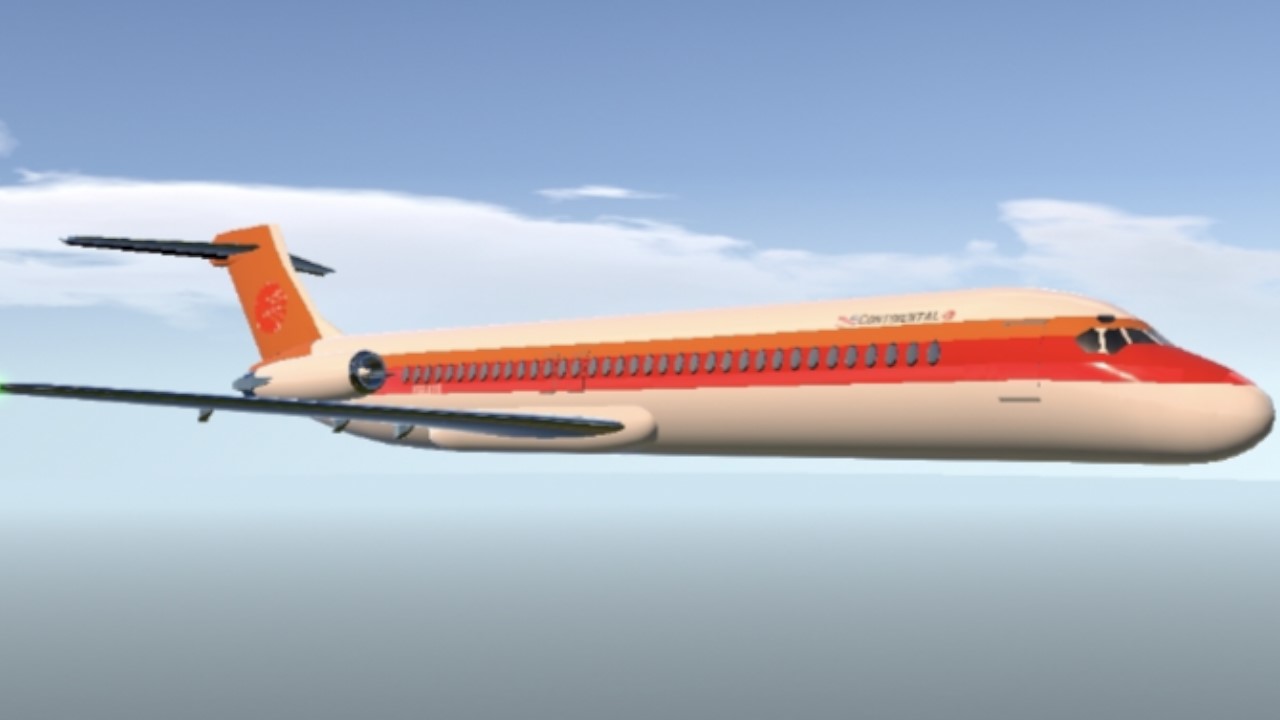
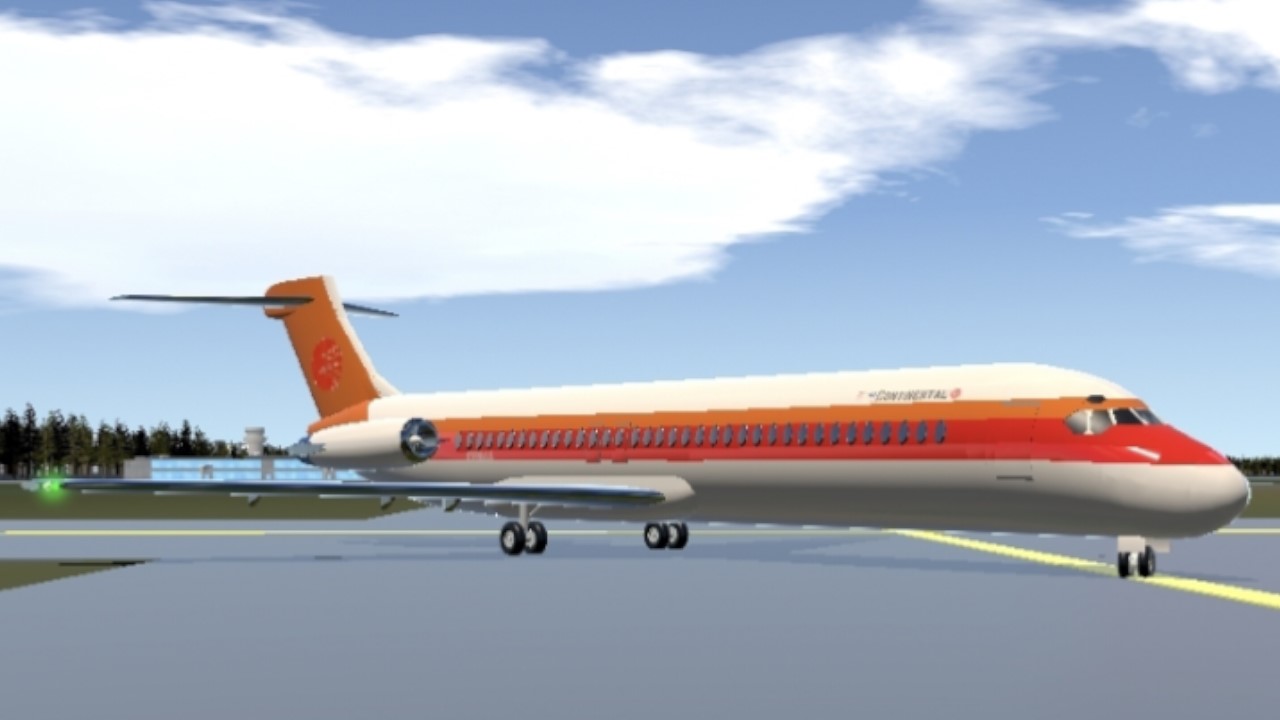
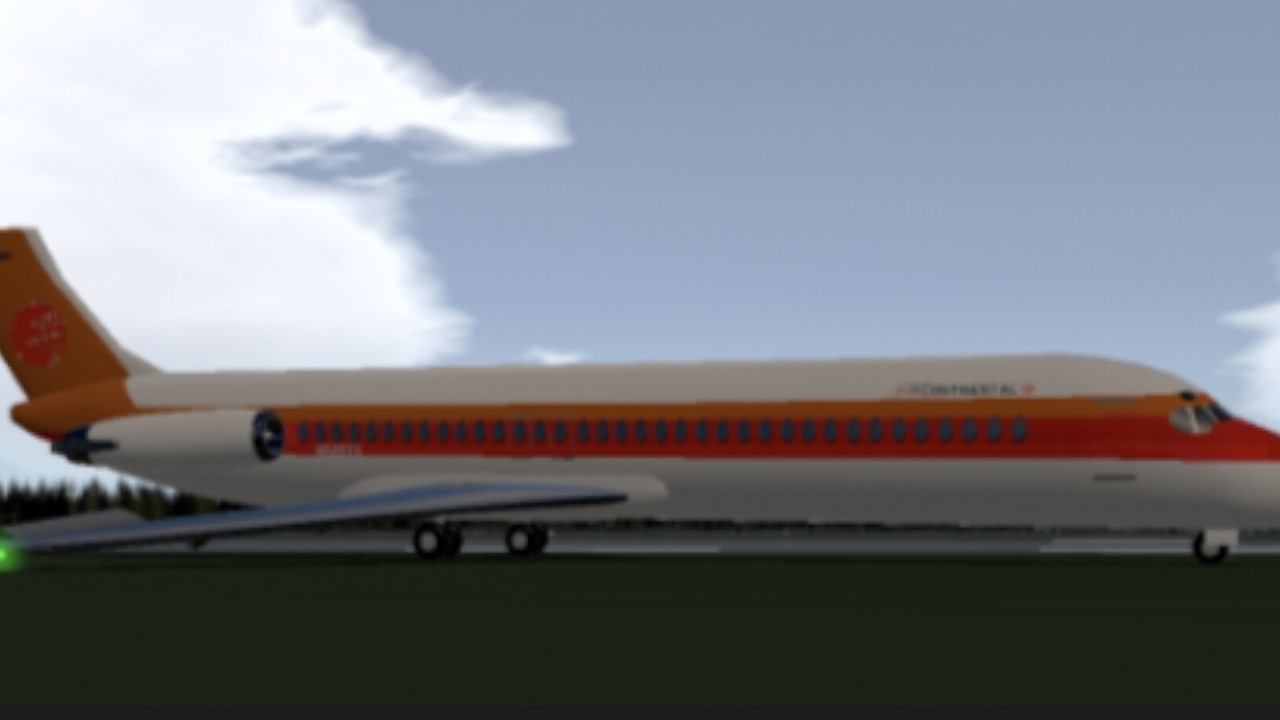
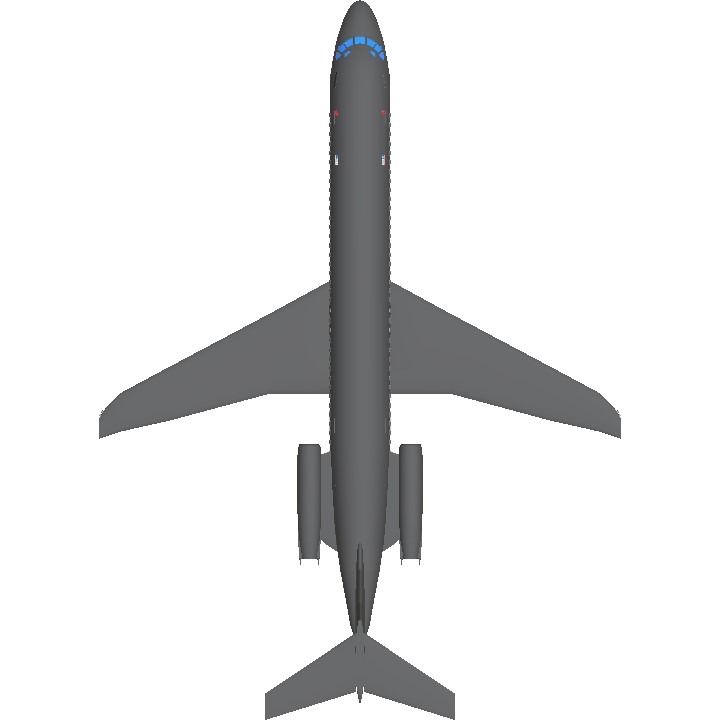
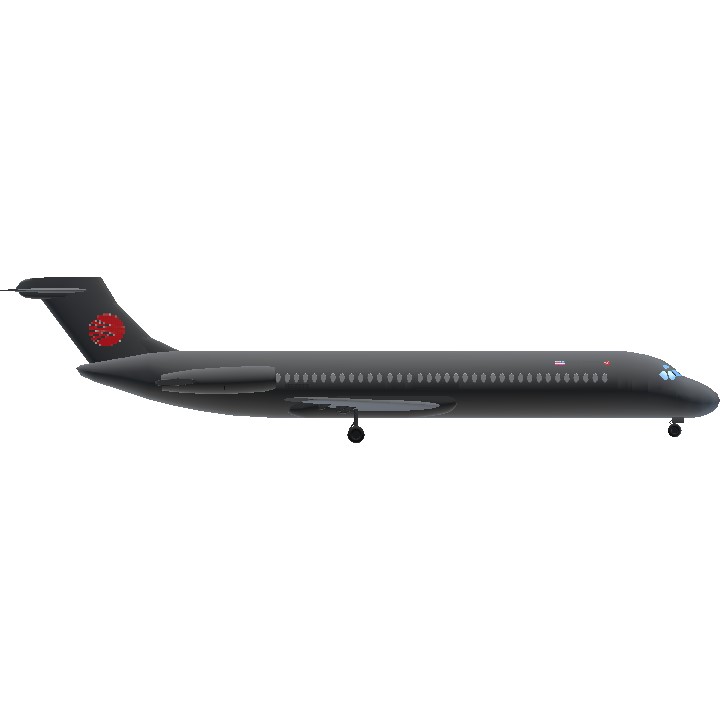
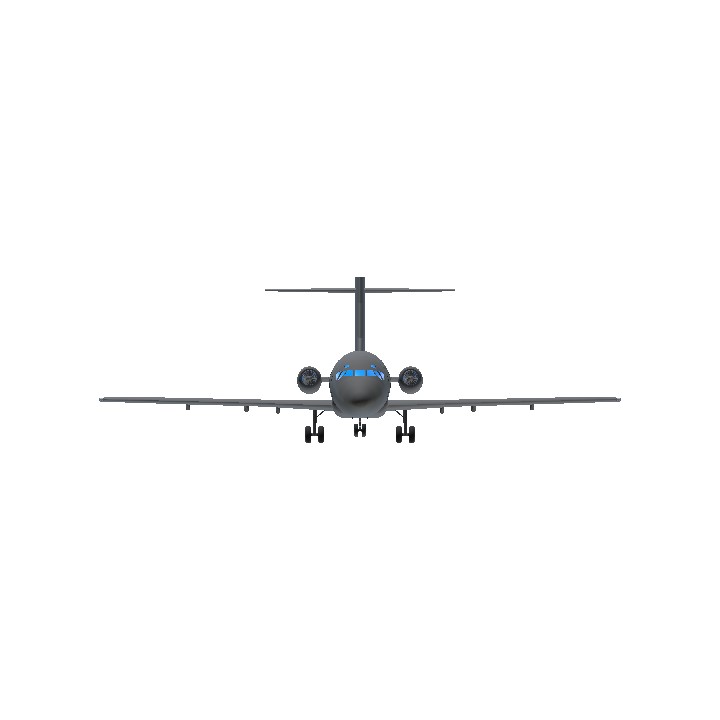
This is the best thing I searched up
Nice!
Looks good!!!!